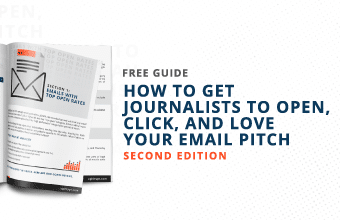Gaining more visibility in your industry can be tough, and an effective PR campaign can be the solution. Working to create a cohesive campaign can be taxing for any company, so it’s a great idea to plan it all out ahead of time. Then, you can watch the magic happen!
Plan your objectives
The first step in your brand new PR campaign should be to decide what you want to do. What do you want this campaign to achieve? Perhaps you’d like more brand awareness or to build your company up as a more reputable household name. Before you go rushing off to PR agencies or partners, you want to make sure that you have this goal defined.
Within that, you also want to think about how you will assess the impact of the campaign. You may want to set up a landing page on your site, or measure a focus group that has been exposed to your ad. Again, this will tie into the goals you have for the campaign.
From there, your budget will begin to come into play. You’ll want to temper your expectations based on the budget that you have, as a smaller budget may not bring in the same results. If you do have a smaller budget, then you may have more success if you narrow down what you want to do. This allows you to use your whole budget on one element, instead of splitting it into many different channels.
Identify opportunities
After you’ve thought about what money you have to spend and the results that you want, it’s time to identify opportunities. These will be different for every company, as these may only exist in your industry or at certain times. An opportunity could come in the form of a charitable partnership or perhaps an advertorial in an industry news publication.
It’s a good idea to keep your eye on your competitors in this regard, as you can hope to build on their strategy. You don’t want to be copying exactly what they’re doing, but you can take a good idea and make it even better. You can look out for the competitors that you see and pay attention to, as this probably means their PR campaigns are effective.
While you want to be able to research these opportunities where possible, some will be time sensitive. You have to be able to make a decision in a timely manner, without rushing into a poor decision. Rest assured, if you don’t make the most of a good opportunity then your competitors will.
Find the right platform
Assessing which platform is right for your campaign is essential. While most of the world feels digital, your campaign may work better in print. Take time to think about where your ad will be placed and who your target market is. If you don’t do this, then you may not be getting the audience that you want.
For example, if you wanted to appeal to a millennial audience, then you may want to use Twitter or Facebook to distribute news about your campaigns. You’ll more likely find Gen Z on Instagram and Snapchat. These audiences aren’t very likely to pick up a newspaper to learn about you, as they tend to get their news from social platforms instead. LinkedIn is becoming more popular for B2B press releases, as they can quickly be shared within networks.
Again, you may want to do some research with a focus group, to understand where your ideal customer gets their news from. This can mean that the early stages of the campaign take longer, but these are resources well spent to ensure the success of the campaign later down the line.
Keep on task
If you’re creating a long-term PR strategy, then you have to be able to stay on task. Organise your thoughts and tasks into a cohesive list. For many PR campaigns, you have to keep up momentum if you want to get the best results, so you can’t afford to take your foot off the gas. If you miss publication deadlines or don’t use them to your best advantage, you won’t get the best possible results for your money.
For those that struggle with productivity and task management, you can use these Kanban board examples to get you started. These are great tools to keep you focused and achieving deadlines. A long-term PR campaign can easily get out of hand, as there’s a lot of different elements to watch out for. You have to be organised if you want to be able to achieve your goals.
You may want to change your goals during the course of your campaign, if so then you need to plan this too. You may want to move from brand awareness to social responsibility, in which case you will have to revaluate your upcoming opportunities. This will allow you to fully change pace, instead of still having some elements working towards your old goal.
Evaluate and improve
At the end of a campaign, it’s time to look back on how it went and what could be improved for your next PR campaign. This will allow you to take these tips on board for your next campaign and then you will be able to get more from your budget. With tracking and productivity, you can also look at which elements of the campaign used the most of your resources.
Using your chosen assessment method, you can decide which placements and advertisements brought you the biggest return on investment. This kind of analytical thinking will allow you to refine your campaigns as time goes on to get an even larger return.
While you may be able to use some advertising methods again, some may perhaps be one time deals. In this case, you can try to replicate success with similar methods. For example, you can’t pair with the same charity again, but you could look for other causes that your company could support.
This can take a lot of time at the end of your campaign, but it’s best to do this while the details are still fresh. Otherwise, you may look back further down the line and not remember some of the finer details. When you assess this data, be sure to pay attention to the facts and figures, to gain real insight. It can be easy to use anecdotal evidence or assume certain campaigns were more effective, but the data may prove that this is not the case.
If you work within an in-house marketing department, then this is a great way to show others how the campaign has progressed. This kind of reporting breaks down all of the fruits of your labours and shows that you have been effective. You can even allow others to weigh in on how they think the campaign could be improved in future too.
When working on a PR campaign, you should be keeping on top of the different elements and always checking on the data to figure out whether it has been effective. PR is always changing and evolving, so you have to create strategies that allow you to work within this environment. Then, you can achieve your goals more effectively over time.








